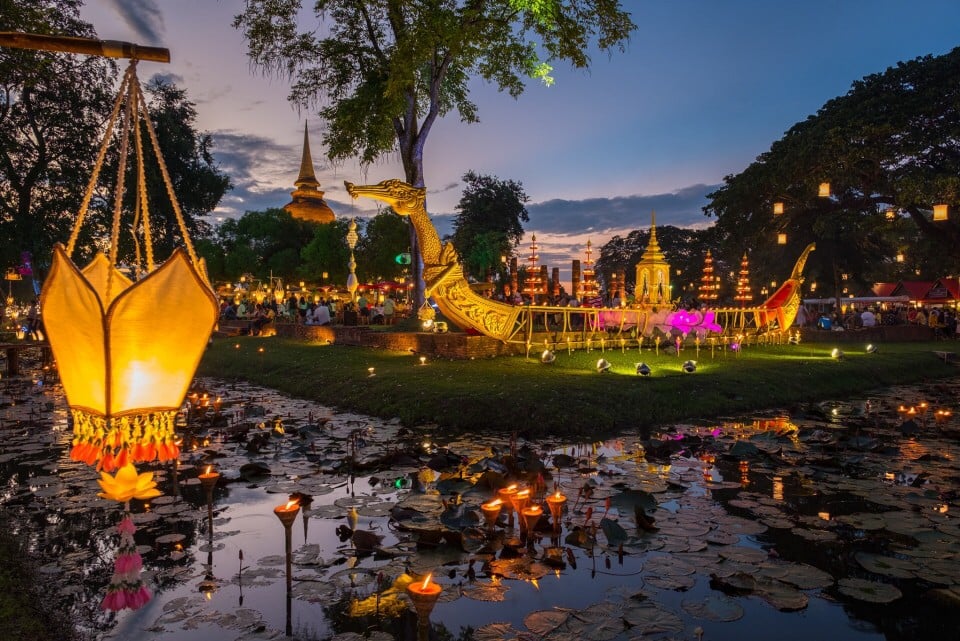
Image credit: Thaiwave
Loy Krathong Festival Facts
Loy Krathong is a romantic and photogenic festival in Thailand. It’s a time of the year when people go out to float small baskets called ‘krathongs‘ in the water and release lanterns into the sky. This tradition has been a part of Thai culture for a long time and holds significant importance for our people.
As November 27th marks the date of the festival, this is the perfect time to delve into 10 interesting facts about Loy Krathong Festival that you might find surprising.
1. Loy Krathong is a festival where you apologise to the Goddess of Water
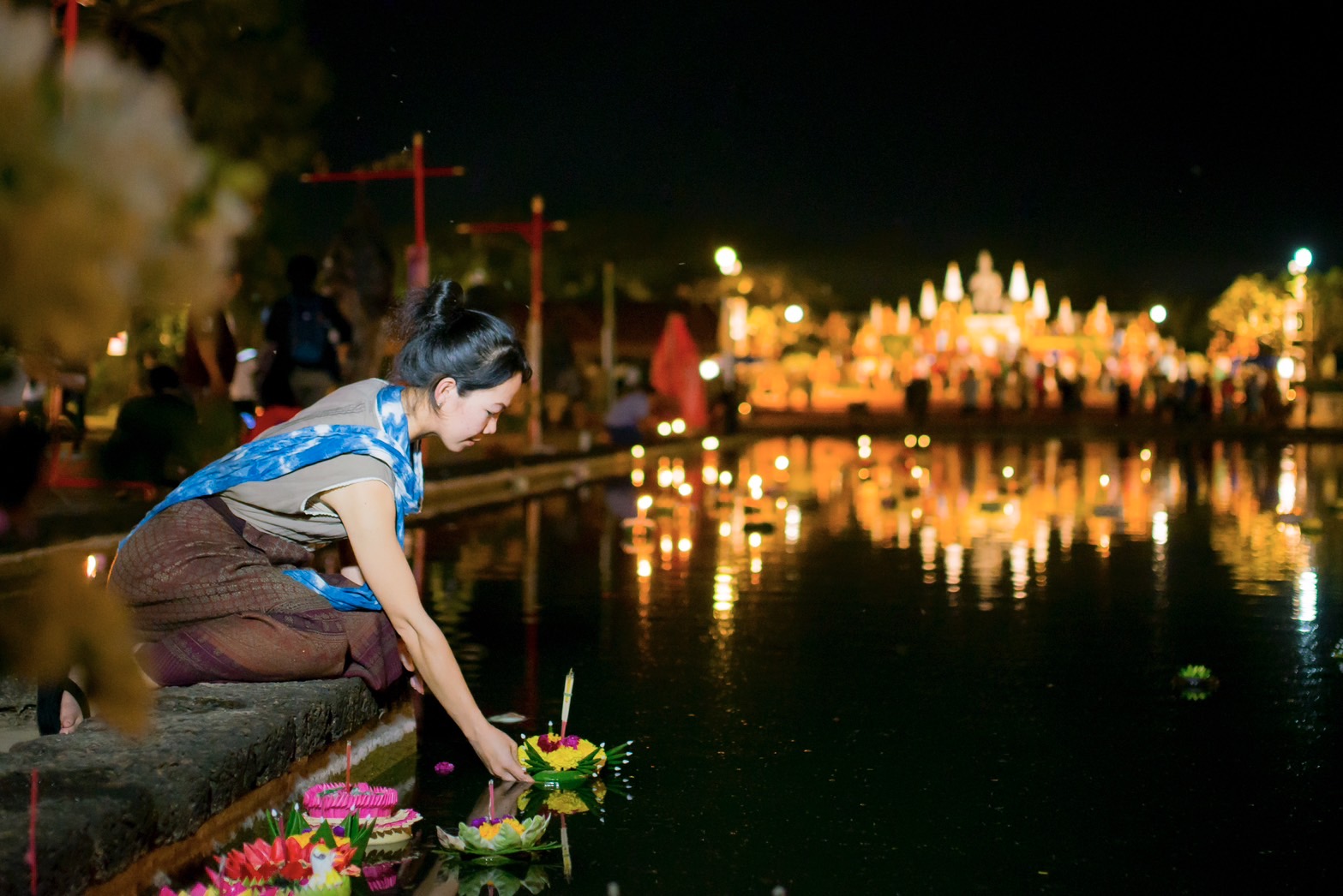 Image credit: Media of Thailand
Image credit: Media of Thailand
Based on old beliefs, Loy Krathong is like this annual thing where Thais show respect to the Water Goddess. It’s a celebration of thanks for everything that water does for us.
So, when folks send those krathongs off into the water with their fingernail pieces, hair strands, or even coins. It’s like a way to ditch the bad vibes and wish for good stuff to happen.
But, these days, a lot of people just join in for the fun of it and to enjoy the spiritual vibes. Whatever your belief, the Loy Krathong Festival is sure to make you feel like a part of something bigger.
2. A krathong is made of a slice of a banana tree trunk, banana leaves, flowers, candles and joss sticks
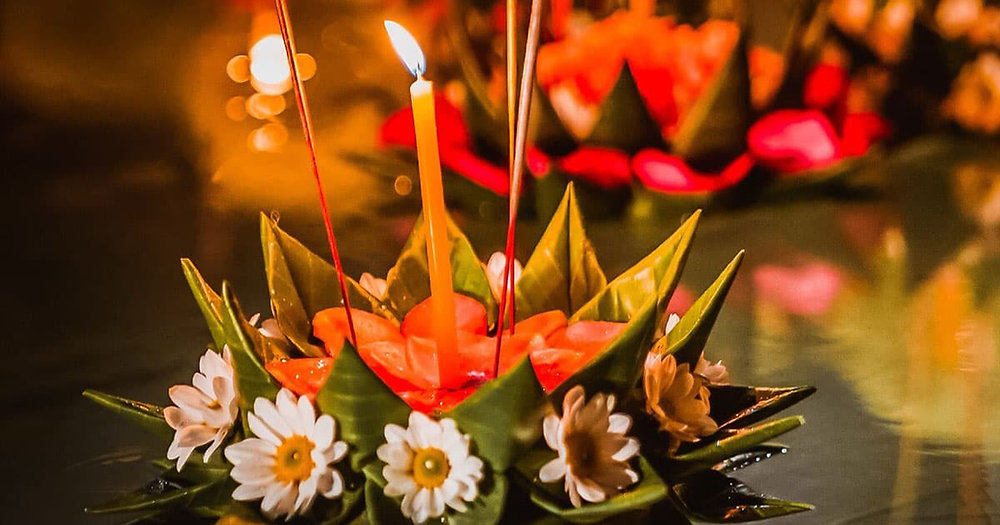 Image credit: Asia Pacific Cultural Center
Image credit: Asia Pacific Cultural Center
“Loy” basically means “to float,” and “krathong” refers to these cute little floats made from a slice of a banana trunk, all dolled up with folded banana leaves, flowers, candles, and incense sticks. So, Loy Krathong means “to float a basket”.
As the festival approaches, lots of folks either buy these items from markets or just DIY at home—bananas are everywhere in Thailand! So, it’s pretty common for people to craft their own krathongs. But if you’re not up for the crafty stuff, you can easily buy one at the festival events too.
3. It was called “Jong Priang” in the past

Image credit: Thaiwave
Without clear evidence, the festival is believed to be adapted from the Brahman lantern procession in India where Indians float lanterns to pay respect to their gods: Shiva, Narayana, and Brahma.
Back then, it wasn’t called “Loy Krathong” but it was “Jong Priang”. According to the text found in the literature of Thao Sri Chulalak, the festival originated in the Sukhothai period. It’s believed that Thao Sri Chulalak aka Nang Noppamas was the first person who invented krathong and floated it into the water. Afterwards, it became an annual tradition.
4. Nang Noppamas never existed
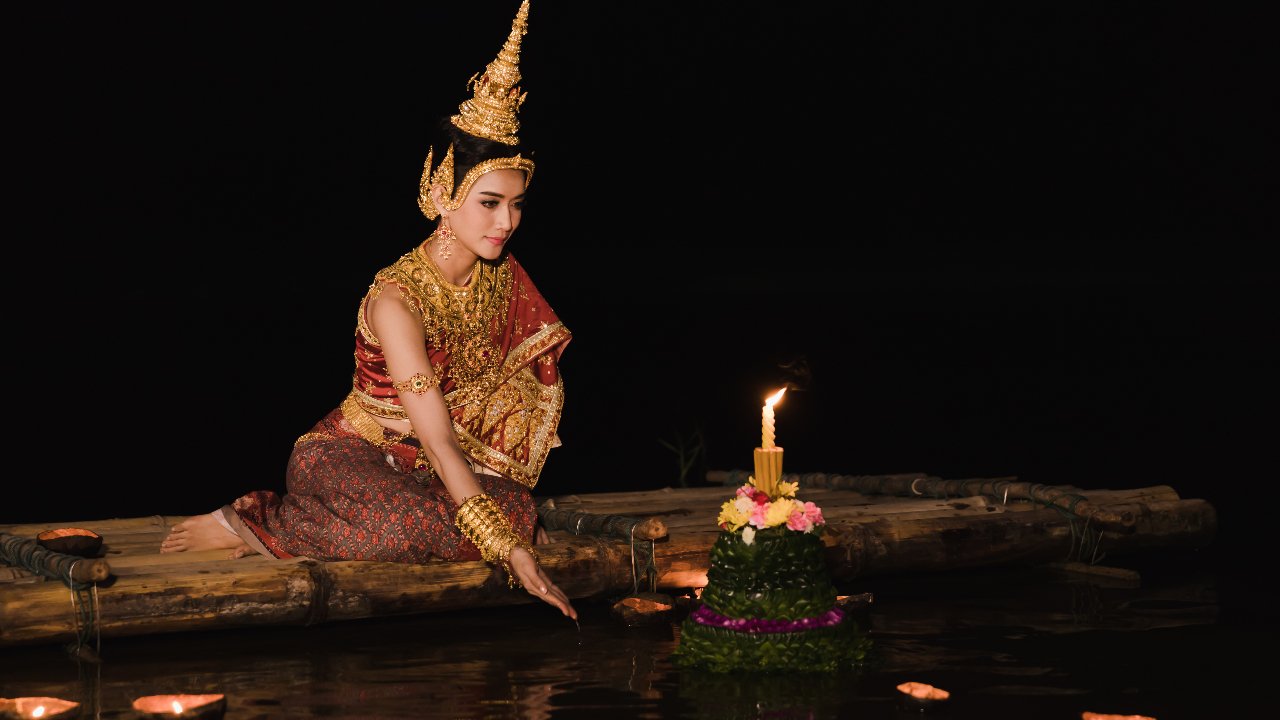
Image credit: Thairath
I know it might be confusing, given the earlier information that she invented the first krathong. However, the Fine Arts Department released a statement a few years ago, asserting that Nang Noppamas never existed and didn’t invent the krathong.
According to the statement, she was merely a character from a book penned during the Rattanakosin period by King Rama III. Moreover, it’s claimed that Loy Krathong originated during the Rattanakosin period, not in the Sukhothai period. Allegedly, this conclusion is drawn from evidence found in various paintings depicting krathong creation during the reigns of Rama I and Rama II.
Anyway, we can all agree that history can be pretty tricky to figure out completely. Evidence sometimes gets all twisted, making it tough to discover and understand the full story. Either way, it doesn’t stop us from enjoying the Loy Krathong Festival.
5. It’s a coin collector’s opportunity to collect coins in krathongs
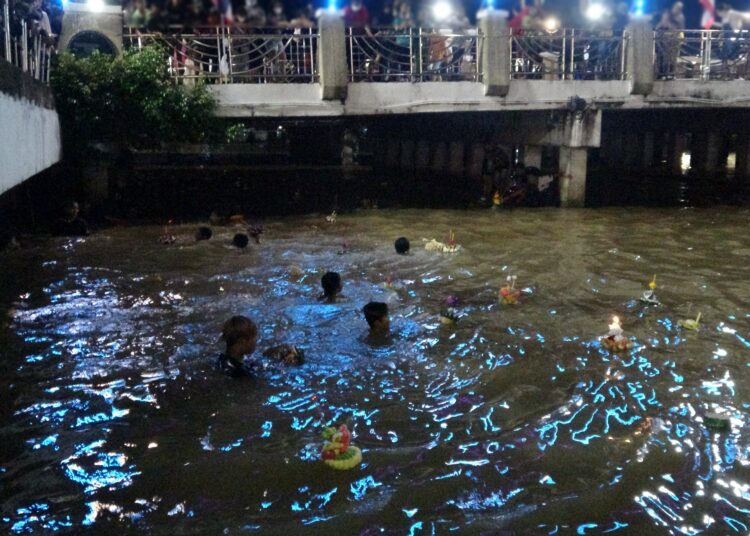
Image credit: Talknewsonline
If you go float a krathong on a river or at the beach, you might be surprised to see some people, including little kids, swimming around in the water.
They are coin collectors! See, many Thai folks put coins and bills in their krathongs before setting them afloat, and these collectors dive in to grab the money. The bummer is that they often tip over the krathongs and don’t really care about the mess they leave behind.
6. Loy Krathong Festival is the Valentine’s Day of Thailand
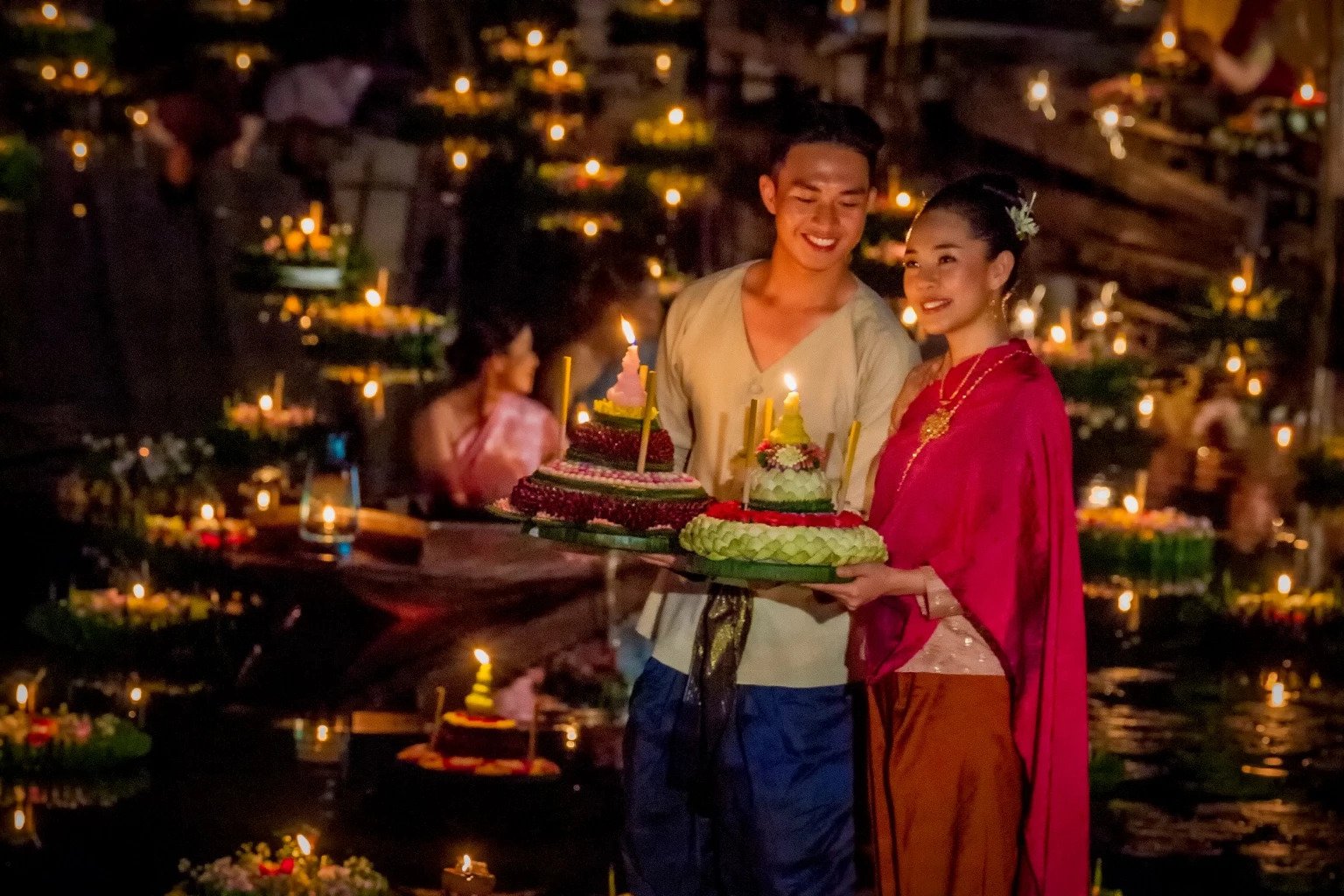
Image credit: ฐานเศรษฐกิจ
While the rest of the world celebrates Valentine’s Day in February; in Thailand, we regard Loy Krathong as our own version of this romantic occasion.
Historically, Loy Krathong held special significance for young couples, offering an opportunity to socialize and initiate relationships. They would convene to float krathongs, expressing wishes for lasting happiness and eternal love. However, in modern times, it has become a day where many teenage couples spend time together and express their affection.
There even exists a belief that when paired krathongs drift apart in the middle of the sea, it is believed that the couple represented by those krathongs may eventually part ways as well.
7. It’s also celebrated in other countries neighbouring Thailand
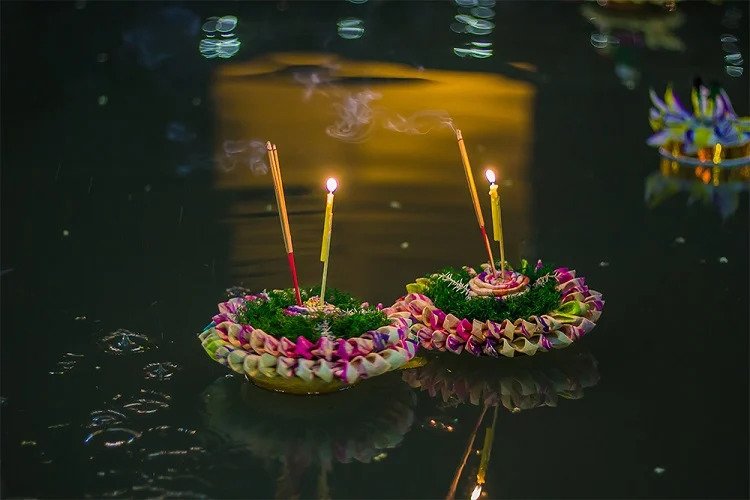
Image credit: Promotions
Although Loy Krathong is known as a Thai festival, Loy Krathong is also celebrated in similar ways in other countries near Thailand. These countries include Myanmar, Cambodia, Laos, India, Sri Lanka, and China.
In Myanmar, it’s called the “Tazaungdaing Festival”, which happens around November. Different from our Loy Krathong, people in Myanmar will light up their homes with lanterns, enjoy street decorations, and join in hot air balloon contests.
8. The Loy Krathong song was written during Loy Krathong and completed in 30 minutes
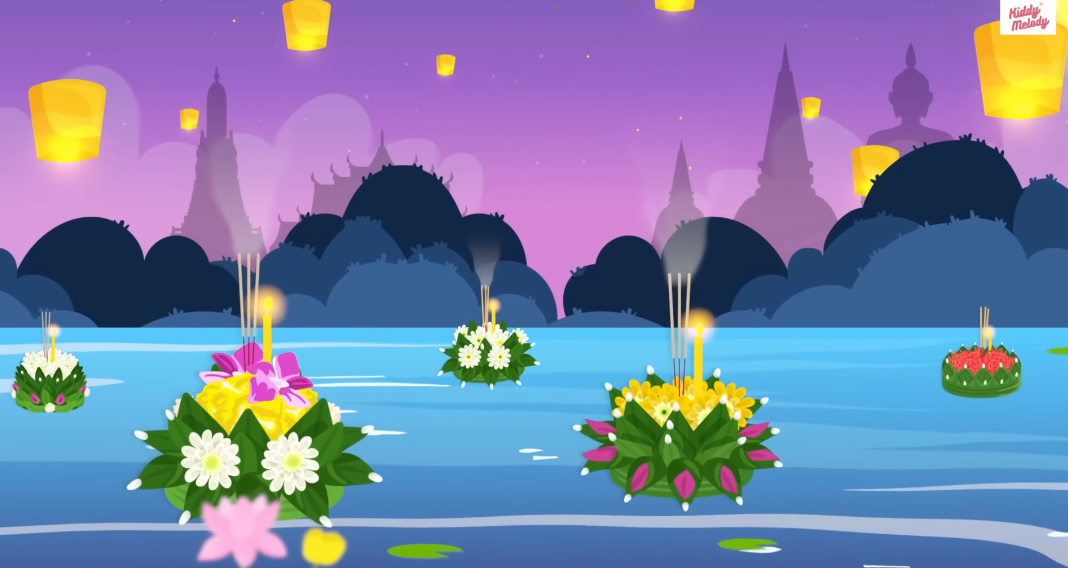
Screenshot: Kiddy Melody เพลงเด็กเจ้าตัวเล็ก
FYI, our festival has its own song, called the “Loy Krathong Song”.
The song was written by Kaew Atchariyakul and Eua Sunthornsanan. Back in 1949 at Thammasat University, there was a Loy Krathong event,and both of them were invited to perform in a band. While performing, the event organiser asked them to write a song for the festival. Loy Krathong Song was written on that day and took about 30 minutes to create.
9. Loy Krathong’s date changes every year
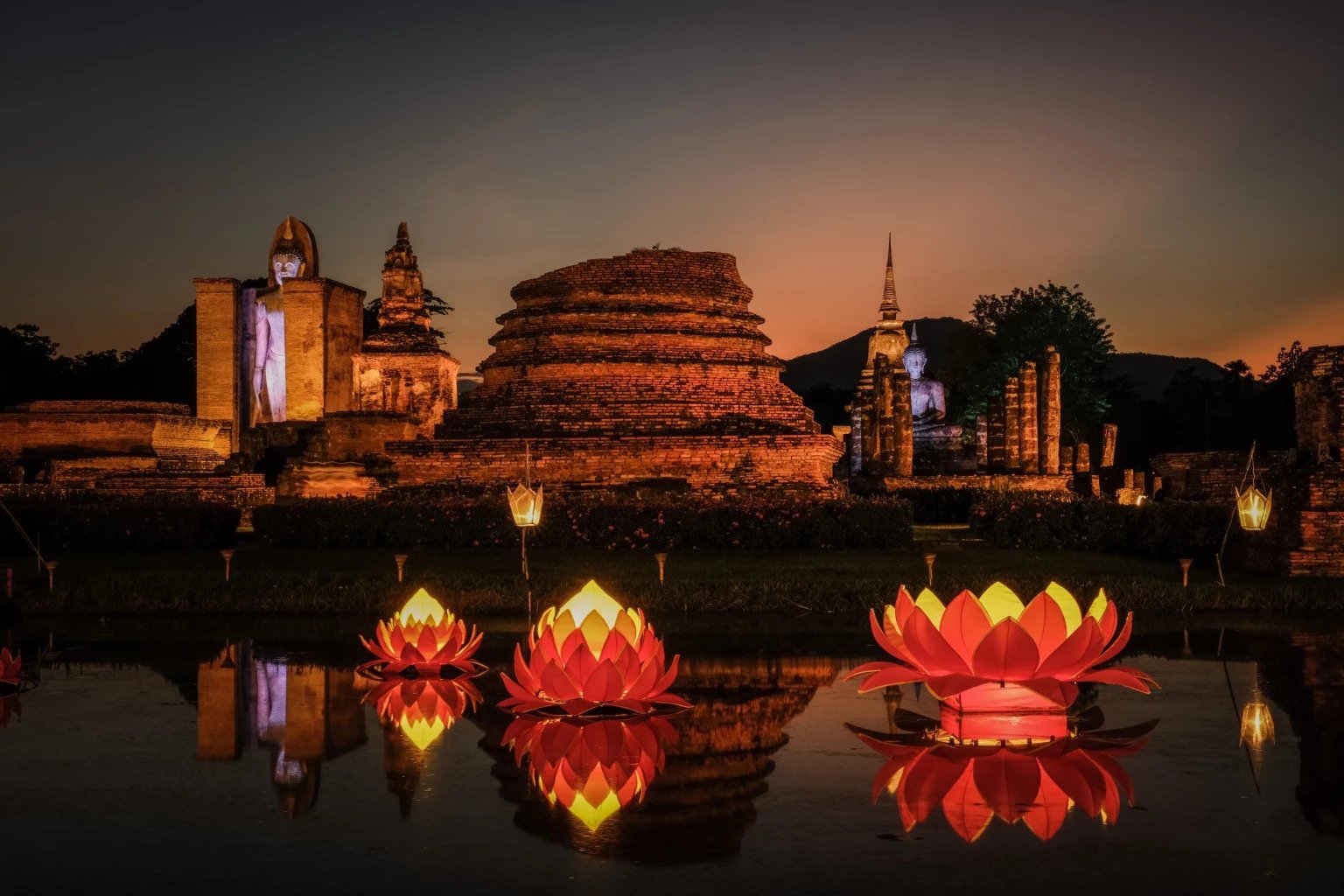
Image credit: ฐานเศรษฐกิจ
Loy Krathong Festival doesn’t have a set date like New Year’s Day or Christmas because it’s based on the traditional Thai lunar calendar.
It usually happens on the evening of the full moon in the 12th lunar month, which usually falls around November in our calendar. So, every year, the date changes a bit in our calendar. That’s why the celebration of Loy Krathong varies from year to year. But it’s generally celebrated in November or early December.
10. Chiang Mai and Sukhothai are worth visiting during the festival
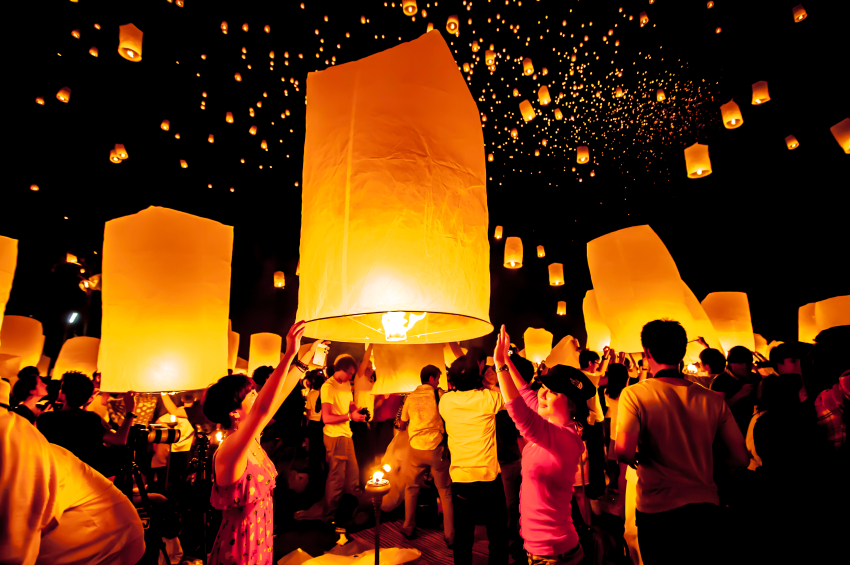
Image credit: Mthai
You can enjoy the celebration of Loy Krathong in any city in Thailand, but Chiang Mai and Sukhothai can give you an entirely different experience.
In Chiang Mai, they celebrate “Yi Peng” on Loy Krathong’s Day. It’s an incredible festival where the sky gets filled with thousands of lanterns glowing like stars. People come together and they release these beautiful lanterns, making wishes and sending them soaring into the night sky. It’s an awe-inspiring sight that brings a magical vibe to Chiang Mai and it attracts folks from everywhere to be part of this stunning celebration.
As for Sukhothai, you can visit Sukhothai Historical Park and check out its Sukhothai Loy Krathong and Candle Festival. You’ll be amazed by the ancient ruins of Sukhothai Historical Park becoming the backdrop for a mesmerising display of lights and traditions. Thousands of candle-lit lanterns and intricately designed krathongs are set afloat on the ponds and moats surrounding the stunning ancient temples and monuments. It also features cultural performances and remarkable fireworks displays.
Up you culture game with these Loy Krathong Festival facts
Loy Krathong Festival is a beautiful opportunity to go out and enjoy the beauty and culture of Thailand. The flickering candle and lantern lights casting a soft glow at night create an atmosphere that’s not only romantic but also imbued with serene tranquillity.
Surely, it’s gonna be one of your greatest experiences while travelling in Thailand.
If you enjoy exploring facts about things and people, you should visit 8 facts about Anntonia Porsild — 1st runner-up in Miss Universe 2023, 6 facts about the Naga Fireball Festival, and 10 facts about Queen Elizabeth’s visits to Thailand.
Cover image adapted from: Mthai, ฐานเศรษฐกิจ, and ฐานเศรษฐกิจ
